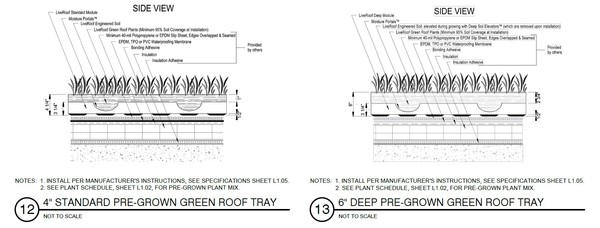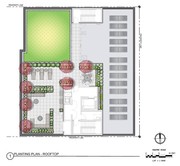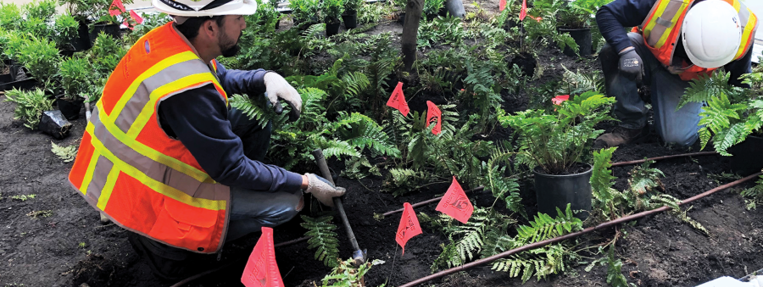Structural and Landscape Architecture Considerations for Living Roofs
Before COVID-19 changed the course of our daily lives, AHBL Structural Engineer Ken Leland, and Landscape Architect Sarah Singleton Schroedel met with a group of 8th graders to discuss Green Roofs and answer questions they had relative to a science project they were working on. The students had several questions for the design team, including the cost and timeline for installing Green Roofs. Green Roofs, also referred to as “Living Roofs” have grown in popularity over the last several years and are one of the many ways the design industry has integrated more sustainable practices. They can be designed in many ways, but at its core a Green Roof is a planted roof system where plants grow in a thin growth layer. The specific design of these roof layers depends heavily on the structural design of the building.
Considerations for engineers designing Green Roofs require particular care to prevent future issues. The roof angle must accommodate runoff, to avoid collecting excess water. Heavy waterproof membranes must protect the integrity of the roof below.

The substrate type and volume will again depend on the structure of the roof. Potential materials may include shale, peat moss, perlite, and coconut husk, among others. This serves as a rooting soil for plants which are typically drought-resistant and require little maintenance.
While upfront costs may be higher, the many benefits of installing a Green Roof will over time be recaptured in longevity and benefit to the ecosystem. In multi-family housing, sustainable features like Green Roofs are becoming sought-after for tenants for whom sustainability is an important consideration.
Beyond the aesthetics, Green Roofs offer practical and sustainable solutions as well. Gree n roofs assist with stormwater mitigation by absorption of plants and soils. In western Washington, stormwater is often at the top of mind for engineers and additional mitigation is always welcome. Additional coverage on the roof structure can increase the buildings insulation and decrease energy demand for heating and cooling. Furthermore, Green Roofs reduce paved surfaces which can cause temperatures to rise in urban environments while providing habitats for birds and insects.
n roofs assist with stormwater mitigation by absorption of plants and soils. In western Washington, stormwater is often at the top of mind for engineers and additional mitigation is always welcome. Additional coverage on the roof structure can increase the buildings insulation and decrease energy demand for heating and cooling. Furthermore, Green Roofs reduce paved surfaces which can cause temperatures to rise in urban environments while providing habitats for birds and insects.
AHBL has designed dozens of Green Roofs, including the Center for Urban Waters, Pierce College Fort Steilacoom Rainier Building, and the recently finished Roosevelt Apartments. In meeting with St. Pats School students in Tacoma, our design team shared drawings from the project and several photos of completed Green Roofs. We are constantly inspired by the curiosity of students, and happy to share our knowledge with young minds!
